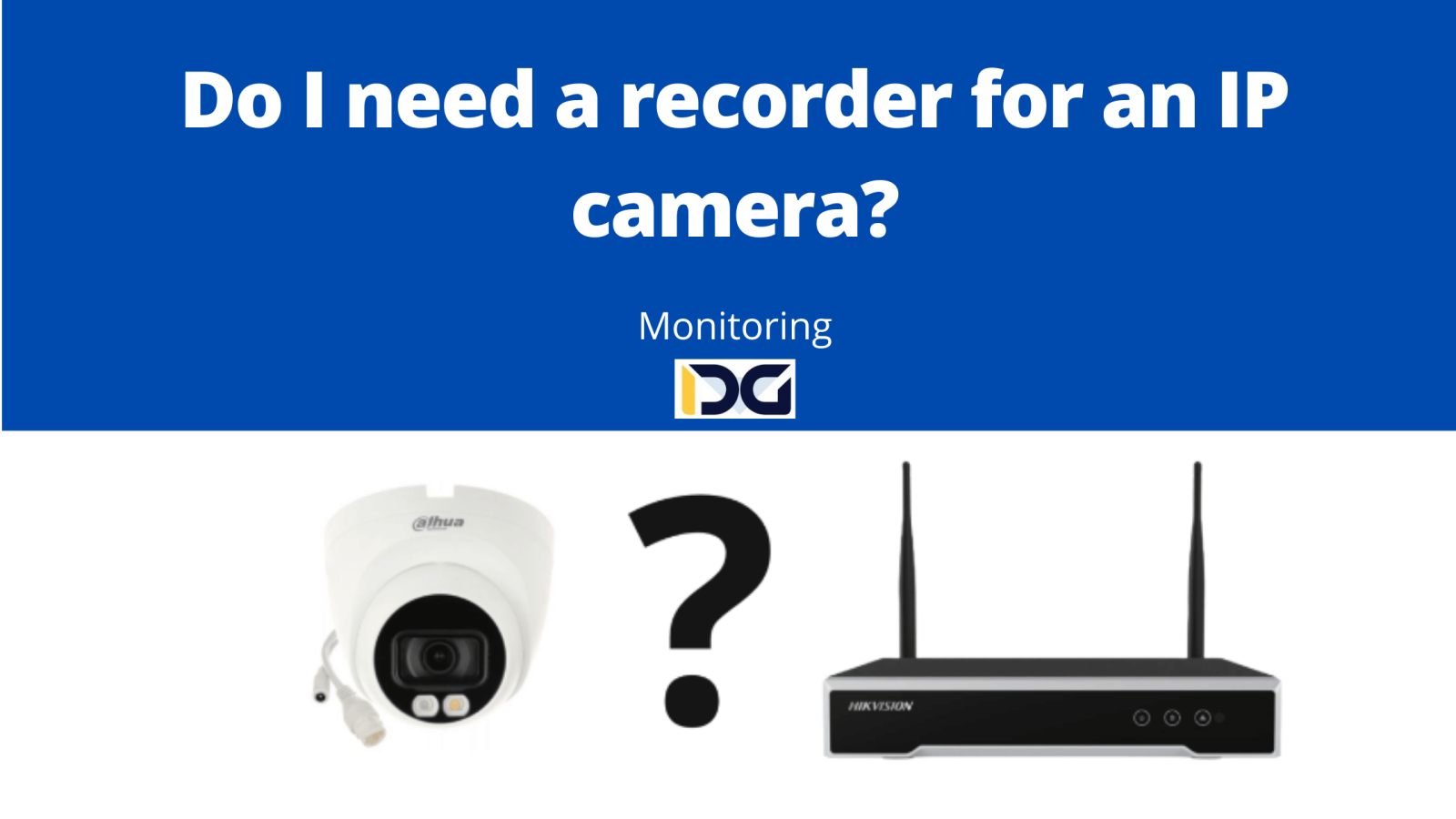
Can an IP camera work without a recorder?
An IP camera (Internet Protocol camera) is a video camera that is connected to a computer network and allows for real-time or on-demand video streaming using the internet protocol. An IP camera can indeed function without a recorder (NVR). The video can be recorded either on an SD card inserted into the camera itself or directly in the cloud storage (such as AWS, Google Drive, Azure, or others).
How can an IP camera be connected to a recorder?
To connect an IP camera to a recorder, you would typically follow these steps:
- Connect the IP camera to the LAN network using an Ethernet cable.
- Connect the recorder to the LAN network using an Ethernet cable as well.
- Configure IP addresses for both the camera and the recorder, allowing them to communicate with each other over the network.
- Log into the network recorder using a web browser and configure it to support the IP camera. This may involve entering the camera’s IP address and other settings like access passwords.
- Verify that the IP camera’s video feed is visible on the recorder’s screen and that the recordings are being saved correctly.
In some cases, specific software may need to be installed on a computer or mobile device to access the recordings and monitor the camera. In such instances, it is advisable to follow the manufacturer’s instructions for proper setup.
Open this in UX Builder to add and edit content
Is a recorder necessary for an IP camera?
No, a recorder (NVR) is not necessary for an IP camera to function. An IP camera (Internet Protocol camera) is a video camera that is connected to a computer network and allows for real-time or on-demand video streaming using the internet protocol. The camera can record the footage at any location on the LAN, WAN, or other network. Additionally, if the camera is equipped with an SD card slot, it can store the video directly on the memory card.
Can an IP camera be connected directly to a computer or other storage device instead of a recorder?
Yes, an IP camera can be connected directly to a computer or other storage device instead of an IP recorder (NVR). An IP camera is connected to the computer network and allows for real-time or on-demand video streaming using the internet protocol. It can be connected to a computer via an Ethernet cable or wirelessly if it has a Wi-Fi module.
How does a recorder enable remote access to IP camera recordings over the local network or the internet?
A network video recorder (NVR) enables remote access to IP camera recordings over the local network or the internet by configuring remote access settings. Remote access allows for monitoring the IP camera’s video feed from anywhere using a web browser or a specialized application on a mobile device or computer.
What are the benefits of using a recorder in conjunction with an IP camera in a video surveillance system?
Using a recorder in conjunction with an IP camera can provide several benefits in a video surveillance system. Here are a few examples:
Recording and storage capabilities: A recorder allows for recording the IP camera’s video footage and storing it in internal memory or an external hard drive. This enables the creation of an archive of recordings that can be reviewed and played back as needed.
Motion detection and alarm features: A recorder may have motion detection and alarm features that automatically send notifications or audible signals when suspicious activity is detected. This helps enhance security and property protection.
Integration with other systems: A recorder can be integrated with other systems such as access control systems or building management systems, allowing for better management and monitoring of the premises.
Longer recording time compared to an SD card: Lower network load compared to using cloud storage, which is essential when operating with a weaker internet connection. IP cameras mainly rely on upload speed, which is significantly lower in dominant asymmetrical internet connections.
Does an IP recorder offer management and configuration options for IP cameras, such as image quality or data compression settings?
Yes, an IP recorder offers various management and configuration options for IP cameras, particularly when the recorder and camera are from the same manufacturer. The standard ONVIF, which is intended to facilitate compatibility across different manufacturers, may not be fully compatible in all cases.
Are there any limitations on the number of cameras that can be connected to a single IP recorder?
The number of cameras that can be connected to a single IP recorder depends on the specific model of the recorder and its processing power. IP recorders vary in terms of the number of supported cameras and their recording capabilities.
Some IP recorders can accommodate a few cameras, while others can handle tens or even hundreds of cameras. Higher processing power recorders can support more cameras and record footage at higher resolutions. The bitrate, which determines the recorder’s video and audio data processing capabilities, is a significant factor.
If you plan to connect a large number of cameras to a single IP recorder, ensure that it can handle the intended quantity and record footage at the desired quality. Pay attention to the internal storage capacity or the capacity of an external hard drive to ensure it is sufficient for storing the recordings.
Can an IP recorder connect IP cameras from different manufacturers or models?
In general, IP recorders can connect IP cameras from different manufacturers or models, provided they are compatible with the ONVIF standard and have an Ethernet interface for connection to the LAN or Wi-Fi.
Does an IP recorder allow integration with other devices or systems, such as alarm control panels or smart home systems?
Yes, many IP recorders allow for integration with other devices or systems, such as alarm control panels or smart home systems. This integration can be achieved through various interfaces, such as serial ports, network protocols (e.g., TCP/IP or UDP), or even wireless interfaces like Bluetooth or Wi-Fi.
An IP recorder can process input and output signals from other devices or systems, such as motion sensors, smoke detectors, emergency buttons, and transmit appropriate output signals to other devices or systems, such as alarm indicators, IP cameras, or alarm control panels.
An IP recorder can also be used to manage and monitor other devices or systems using specialized software or applications that enable remote management and configuration of those devices or systems from a computer or mobile device.
It’s important to note that the specific integration capabilities of an IP recorder with other devices or systems depend on its specific features, technical specifications, and the software supporting those integrations. Therefore, it is important to carefully review the technical documentation of an IP recorder before making a purchasing or implementation decision.
